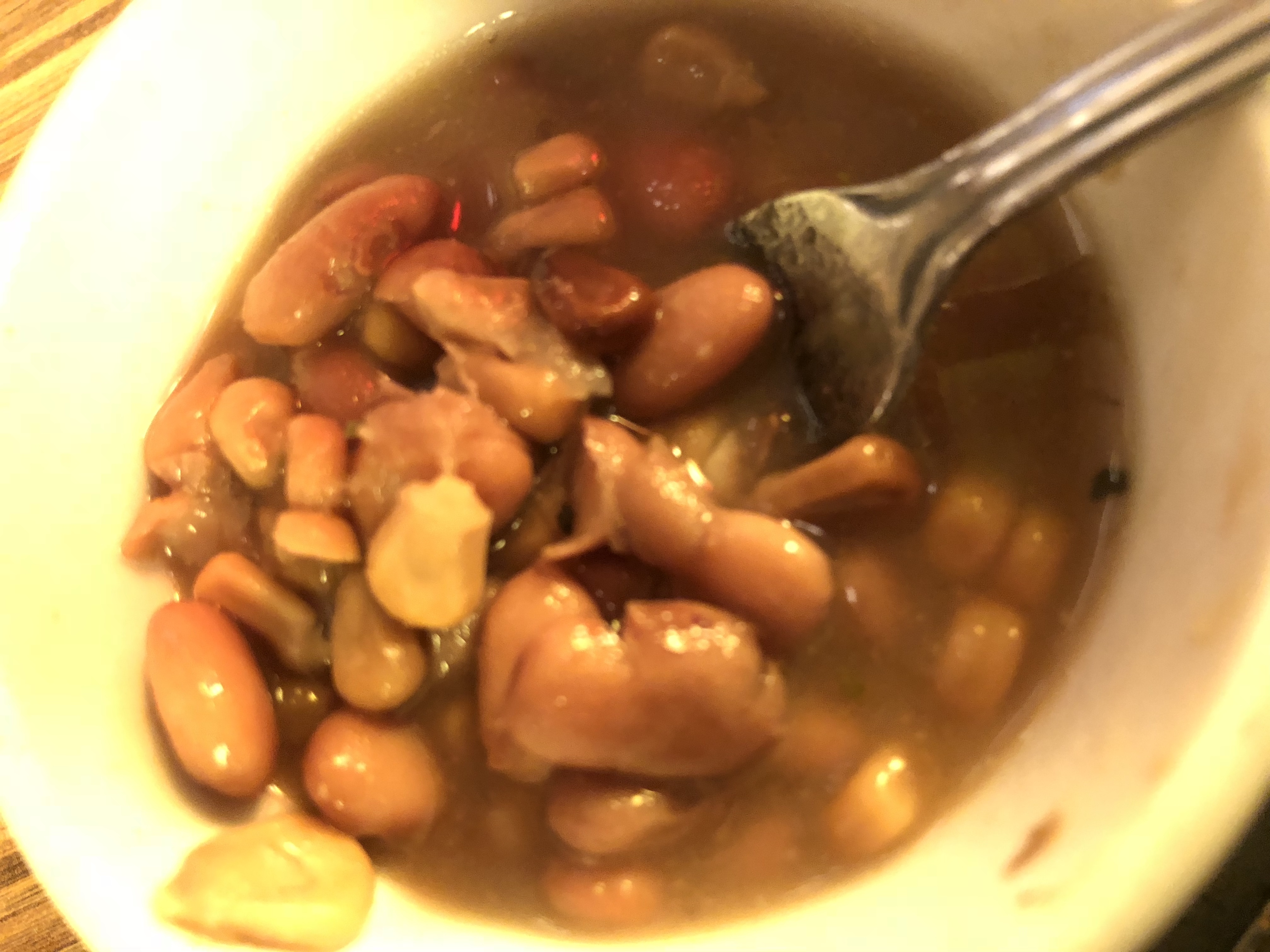I was taught to never add salt to the cooking water for beans, otherwise you’re supposed to end up with hard skin in edible beans. But one day I decided to experiment in my editing pens of salt at the beginning and no longer with the clover, garlic salt in the cooking bean water have some cooked faster, adds a lot of flavor, and makes the beans creamier and have some stay more intact. The fact is the beans are fairly temperature beans. You didn’t need to play around with the cookie methods to get things right I think it’s about 45 minutes from start to finish for being such as chickpeas, butter, beans, and pinto. I don’t even bother to suck them overnight, but soaking them overnight to speed up the cooking time. Cover your beans some plenty of water. Bring the boil and a lot of cook on high here for five minutes. Turn down the heat to low summer two or three big pinches of sea salt, and one clove of garlic bread cook until the beans are tender. At the end of cooking the garlic should breakout.
Epazote the Mexican Solution to the Beano Problem
Epazote has a distinctively sharp, herbal flavor, reminiscent of oregano and fennel with minty, pine notes. It is commonly found in Mexican cooking, where it’s a popular pairing with beans, since it can reduce their tendency to cause flatulence.
Chicos
Usually made with young “green” field corn, chicos are typically slow-roasted in outdoor horno ovens and then dried on rooftops. Farmers start a wood fire in the horno, and when the oven walls reach the right temperature, they rake out the embers with a hoe, place moistened corn in its husks inside, seal the door and vent hole, and leave the corn to roast overnight. The ears emerge the next morning with a prized light smokiness. In many areas chicos have become a nearly lost classic, only available at some farmers’ markets, old-fashioned general stores, and specialty shops like the Santa Fe School of Cooking, but they are definitely worth a major search effort. When dried, they keep well for many months, and when cooked, the chicos burst with smoky, slightly chewy goodness, offering a quite different taste and texture than posole.
Cooking with Dried Beans
Cooking with dried beans can be intimidating, but don’t worry: It’s easy! Sure, opening a can may seem easier, but trust me, it’s not much more difficult to do it the old fashioned way–and it’s much cheaper. I think the hardest part is remembering to soak the beans. And freshly cooked beans have a taste that just can’t compare to canned beans. They are almost sweet.
Mexican cooks have long known that cooking beans with the herb epazote adds an unusual and delicious flavor and aids in their digestion (reducing the gas they often cause).
Here’s an easy recipe for cooking beans.
Easy Dried Beans and Chicos
2 cups dried beans
1 Tbsp. dried epazote
1 Tbsp. dried oregano
1-3 cloves garlic, minced
1 c. chicos
a few roasted and diced green chiles
Note: Do not add salt to the beans while cooking. It makes the beans tough.
- Rinse beans and chicos. Place in a large glass or ceramic bowl. Cover with fresh, cold water by about 2 inches. Let soak at least eight hours or overnight.
- Pour out soaking liquid and rinse beans and chicos. Place in a large cooking pot and add epazote, oregano and garlic, Cover with about 2 inches of fresh, cold water and bring to a boil. Turn down to a simmer and cover and cook for about 1 hour, stirring occasionally. If the beans don’t taste done, cook another 20 to 30 minutes or more until the beans are tender. Add more water if needed.
- When done, serve immediately or let the beans sit in the pot in their cooking liquid to cool for later use. Letting them cool in their cooking liquid keeps the beans from drying out. Before storage, drain some, but not all, of the cooking liquid.
- Add green chile and season with salt and pepper to taste. Never add salt while cooking beans, as it hardens them.

